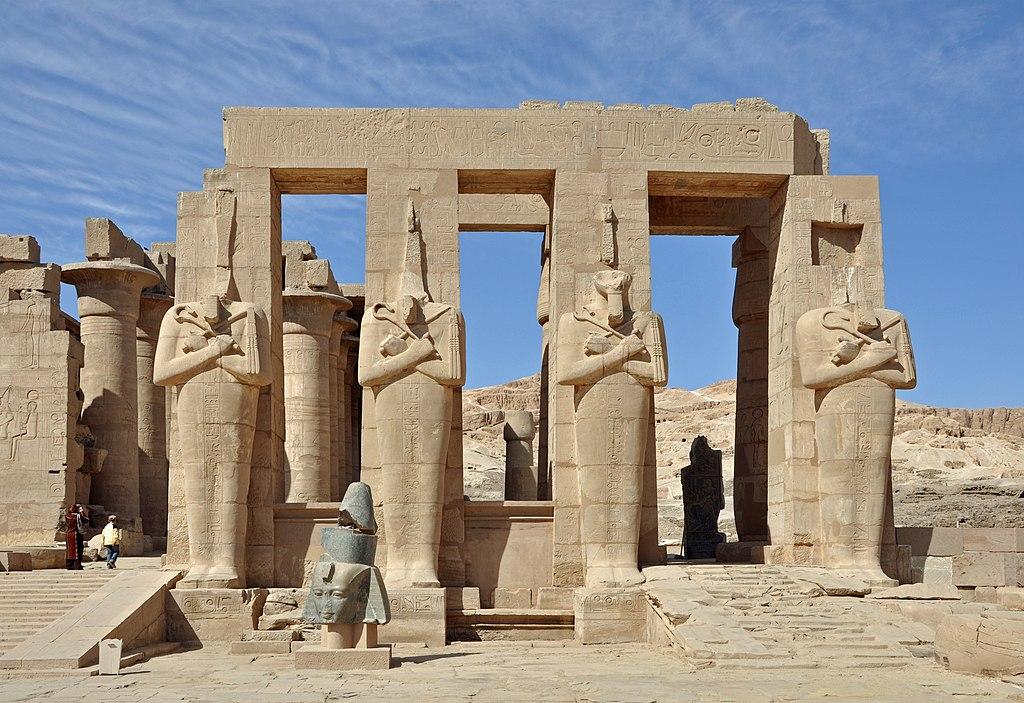
Ramesseum Temple: Paying Homage to Ramses II
The Ramesseum Temple is a grandiose monument located in Luxor, Egypt. Built by Ramses II during the 19th Dynasty of ancient Egypt, it was designed as an homage to the great pharaoh and his accomplishments. The temple complex consists of two main structures: a large pylon gateway and a hypostyle hall with six pillars. Ramses used this monumental structure to symbolize his divine power and greatness - constructing giant statues of himself on its walls, displaying scenes from his military successes, and even creating hieroglyphic texts that proclaimed him as the ruler of all lands. With its majestic architecture and stunning artwork, it has been declared one of the most important sites in Egypt's cultural heritage.
Ramses II was known for being one of the greatest Pharaohs who ever ruled in Ancient Egypt. He ascended to power around 1279 BC at only 25 years old after defeating other contenders for rule over Upper and Lower Egypt. During his 67-year reign he expanded Egyptian territories through successful military campaigns across Canaan, Syria-Palestine, Nubia up to Sudan’s fourth cataract region which earned him immense popularity among Egyptians at home but also among numerous foreign countries abroad due to trade agreements made with them throughout his lifetime.
History of the Ramesseum Temple
The Ramesseum Temple is located in Luxor, Egypt and was built by Ramses II during the 19th Dynasty of ancient Egypt. The temple complex consists of two main structures: a large pylon gateway with six pillars and an elegant hypostyle hall. As one of the most important sites in Egyptian cultural heritage, this grandiose monument has been acclaimed for its majestic architecture and stunning artwork.
The entrance to the temple is marked by an impressive pylon gateway that stands tall at over 30 meters high. This imposing structure features two colossal statues of Ramses on either side which symbolize his divine power, as well as reliefs depicting some of his greatest military triumphs such as the Battle of Kadesh against the Hittites. Inside the hypostyle hall, visitors can find hieroglyphic texts proclaiming Ramses’ greatness throughout all lands he ruled over while also admiring more scenes from his victories on its walls.
One unique feature that makes this temple stand out from other monuments is its intricate floor design featuring several representations of papyrus bundles - a sacred plant associated with life in Ancient Egypt - alternating between ridges and channels filled with water or sand which were meant to represent different aspects related to creation such as fertility or rebirth after death respectively according to their mythological beliefs. These creative symbols add another layer meaning to what already appears like an awe-inspiring work dedicated entirely to Pharaoh Ramses II’s reign over Upper and Lower Egypt during much part of 1279 BC until 1213 BC when he passed away due natural causes at age 90 making him one history's longest ruling monarchs ever recorded anywhere around world today!
Features of the Ramesseum Temple
The colossus statues of Pharaoh Ramses II are an impressive feature of the Ramesseum Temple. These two large statues stand guard at the entrance to the temple, symbolizing the king's divine power and might. Their faces have been carefully crafted with realistic features and their bodies are adorned in traditional royal garments that signify his position as a ruler. The details on these sculptures are so intricate that they appear almost lifelike even after thousands of years since construction!
Another noteworthy feature inside the temple is its walls, which were decorated with scenes from Ramses' military victories, such as his famous Battle of Kadesh against the Hittites. Each scene was intricately carved into stone depicting different aspects of battle - from warriors clashing swords to chariots racing across battlefields - all painted in vivid colors that still retain their beauty over time. These wall decorations serve as a reminder not only to ancient Egyptians but also modern visitors about Ramses’ great accomplishments during his reign and how he established Egypt into one powerful nation despite many challenges it faced back then.
Conservation Efforts
Conservation efforts to preserve the Ramesseum Temple have been ongoing since its discovery in the 19th century. Early restoration projects focused on stabilizing and restoring the stone carvings and wall paintings, while more recent conservation initiatives have shifted towards preserving the entire temple complex as a cultural heritage site.
In 2018, UNESCO launched a multi-year project to further protect this iconic monument from environmental degradation caused by natural disasters such as floods or earthquakes. This initiative includes reinforcing existing structures with steel poles and installing waterproof barriers around vulnerable areas of the temple, such as near its entrance gate. Additionally, regular maintenance is conducted at least once a year to ensure that all sections of the structure remain in good condition over time.
Aside from physical preservation measures, educational programs are also being implemented in order to spread awareness about protecting Egypt’s cultural history among locals and visitors alike. These activities involve guided tours through different parts of Ramesseum’s temple complex during which participants learn about important aspects related to its architecture and artwork - providing valuable insight into Ancient Egyptian culture for future generations.
The protection of The Ramesseum Temple is essential for both historical accuracy as well as tourism purposes; it serves not only as an awe-inspiring reminder of Ramses II's greatness but also provides employment opportunities for locals whose livelihood depends on it directly or indirectly due to increased visitor numbers each year thanks these conservation efforts!
Impact of the Ramesseum Temple
The Ramesseum Temple has had a great impact on the culture of Ancient Egypt. The temple complex is a testament to the grandeur and power of Pharaoh Ramses II, who ruled over Upper and Lower Egypt for 67 years during the 19th Dynasty. By constructing this monumental structure as a symbol of his divine authority, he established himself as an iconic figure in Egyptian history whose legacy continues to live on today.
The temple’s intricate wall decorations depict scenes from some of Ramses' greatest military victories such as his famous Battle of Kadesh against the Hittites, providing visitors with an insight into ancient warfare tactics used by Egyptians at that time and how they defended their kingdom against foreign invaders. The hieroglyphic texts inscribed throughout the walls also serve as valuable historical records which can be studied for further understanding about Egypt's past rulers and their accomplishments during those times.
Aside from being influential for its cultural significance, the Ramesseum Temple also plays an important role in tourism industry within Luxor region due to its status as one most renowned archaeological sites there! Visitors come from all around world each year marvel at this majestic monument constructed thousands years ago - providing locals with much needed economic boost through employment opportunities generated by increased influx tourists or even just simple souvenir sales near entrance gate itself showcasing unique aspects related Egyptian culture such papyrus bundles represented intricately designed floor layout inside hypostyle hall section building making it both educational eye-catching experience them same time!
Conclusion
The Ramesseum Temple is an iconic monument that stands as a testament to the grandeur and divine power of Pharaoh Ramses II. Its imposing entrance gate, majestic hypostyle hall, intricate floor design and detailed wall decorations all serve to commemorate the Pharaoh’s legendary reign over Upper and Lower Egypt during much part 1279 BC until his death in 1213 BC at age 90 making him one history's longest ruling monarchs ever recorded anywhere around world today!
Conservation efforts have been ongoing since its discovery in 19th century with early projects aimed mainly at restoring various elements within temple complex such hieroglyphic texts or stone carvings while more recent initiatives focus on protecting entire site from environmental degradation caused by natural disasters like floods earthquakes which could potentially put it danger if not taken seriously enough time. Furthermore educational programs are also being implemented order spread awareness among locals visitors alike about importance preserving Egyptian cultural heritage for generations come - providing valuable insight into Ancient culture through guided tours different parts this magnificent structure showcasing some most impressive artwork seen any other archaeological sites country!
The Ramesseum Temple holds immense value both historical accuracy tourism purposes - serving reminder greatness once achieved by Ramses as well economic boost provided employment opportunities generated increased influx tourists each year thanks these conservation efforts which ensure its survival many years come no matter what challenges may arise along way!
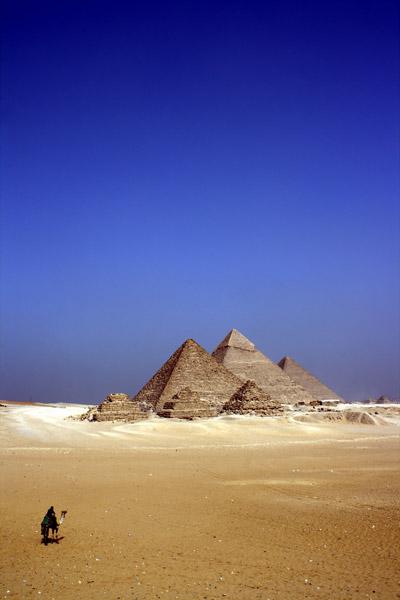
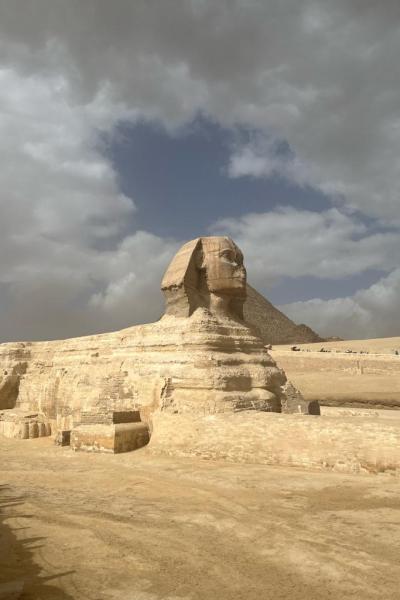
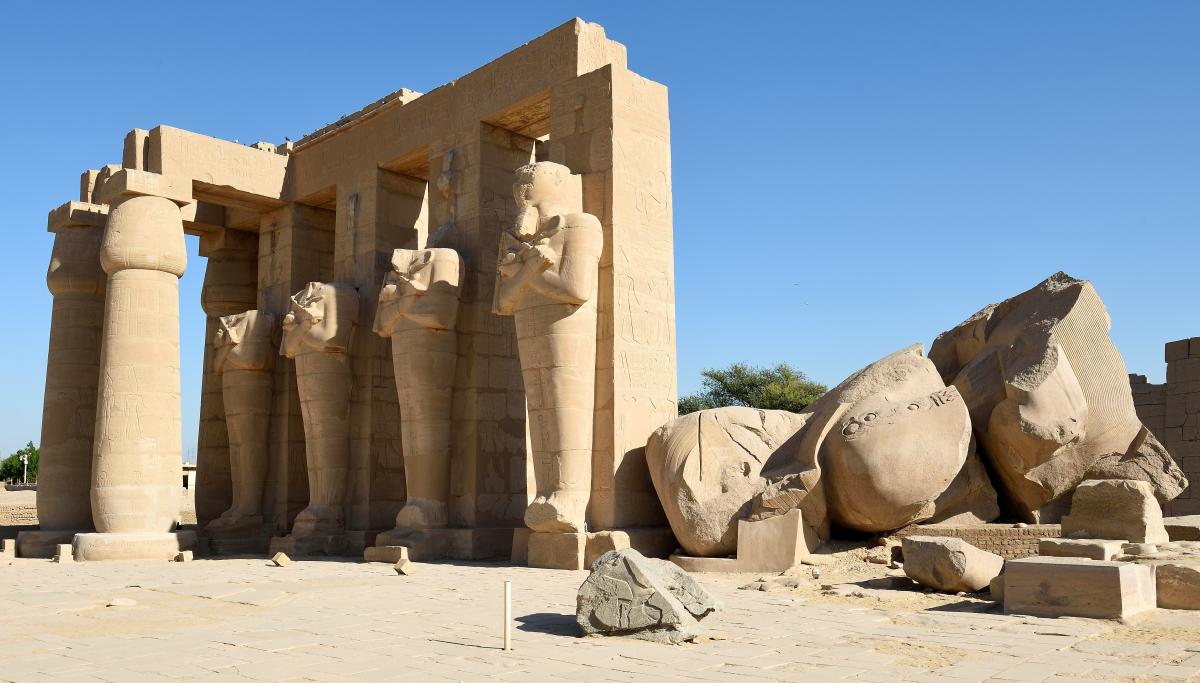
Across the Nile River from the bustling modern city of Luxor lies a landscape of dramatic dualities that shaped the beliefs and lives of the ancient Egyptians . The West Bank presents a stark transition from a verdant, life-giving floodplain, created by millennia of the Niles annual deposit of fertile...
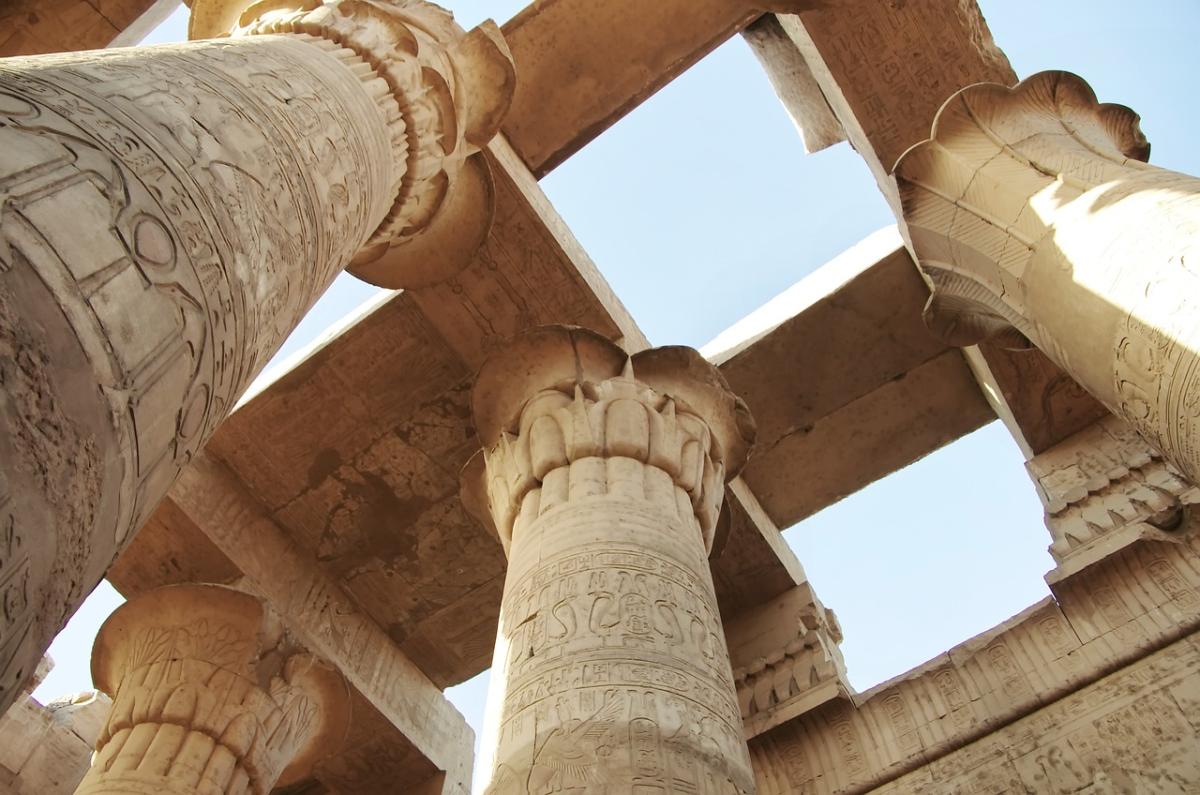
Karnak Temple is one of the most awe-inspiring ancient sites in Egypt. Located near Luxor, Karnak was once a bustling religious center dedicated to the god Amun and his consort, Mut. Dating back thousands of years, this incredible temple complex has been gradually built up over time by generations of...
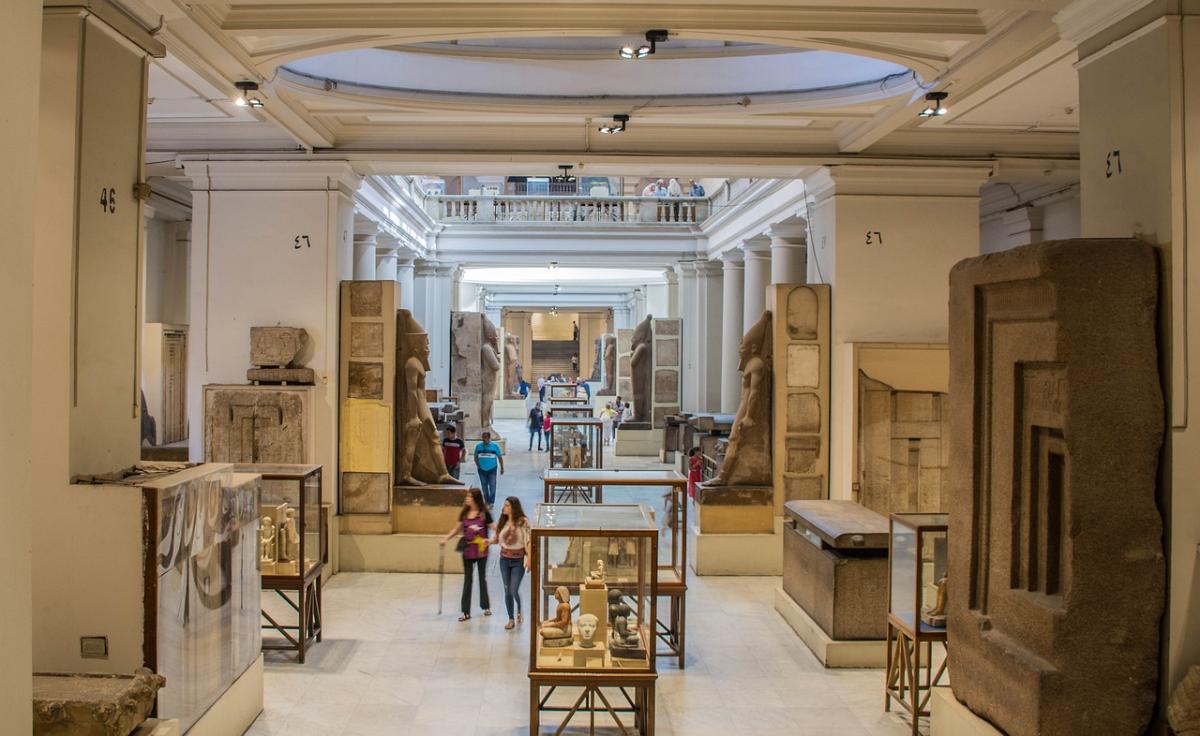
Luxor Museum is a world-famous museum located in Thebes, Egypt. Its main attraction is its Tutankhamun Collection, which consists of the artifacts found in the tomb of this ancient Egyptian pharaoh. It also houses many other artifacts from different periods of Ancient Egypt history as well as contemporary...